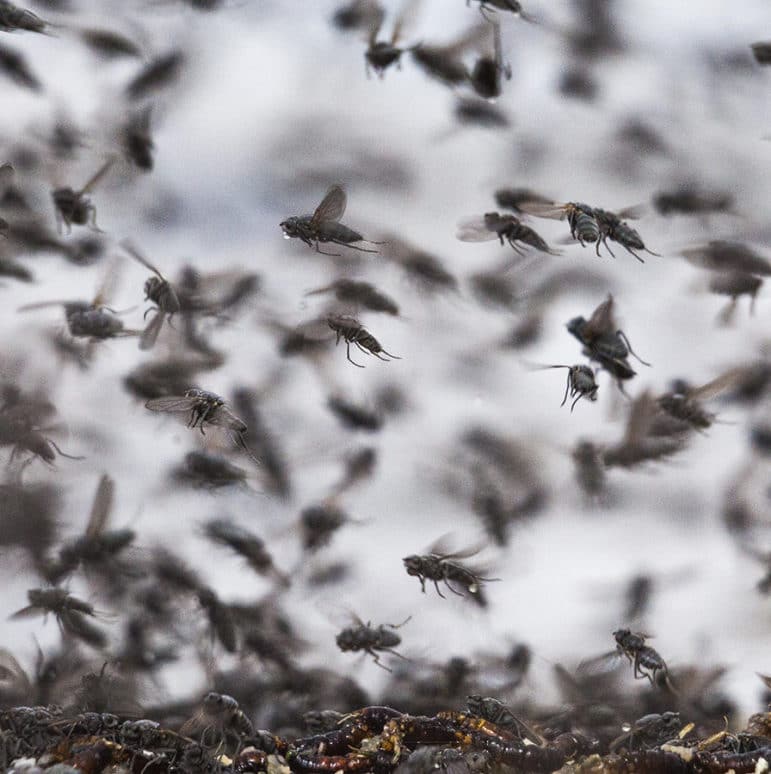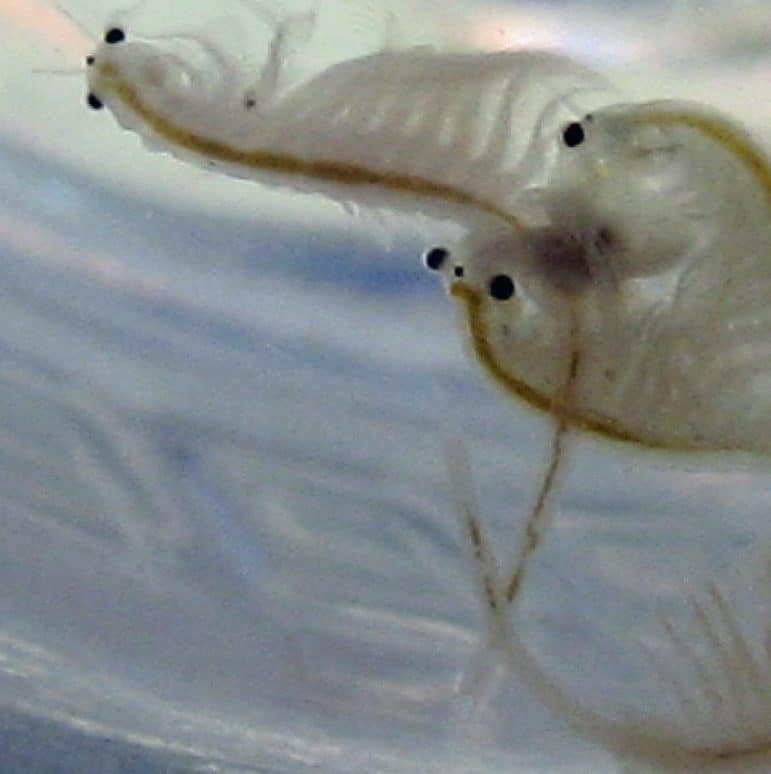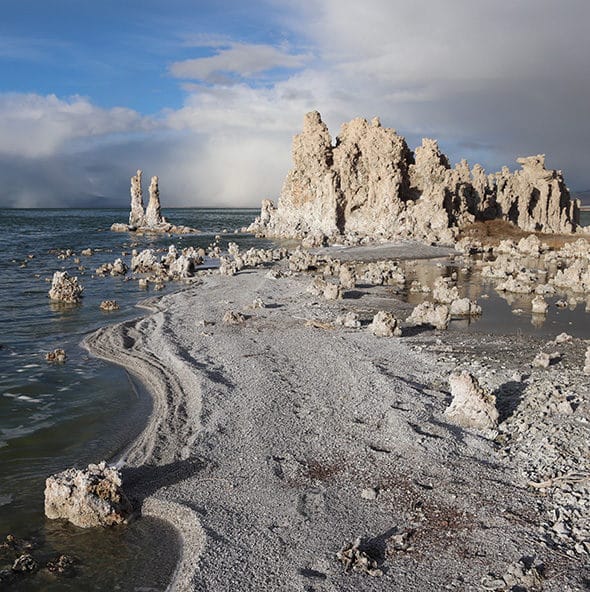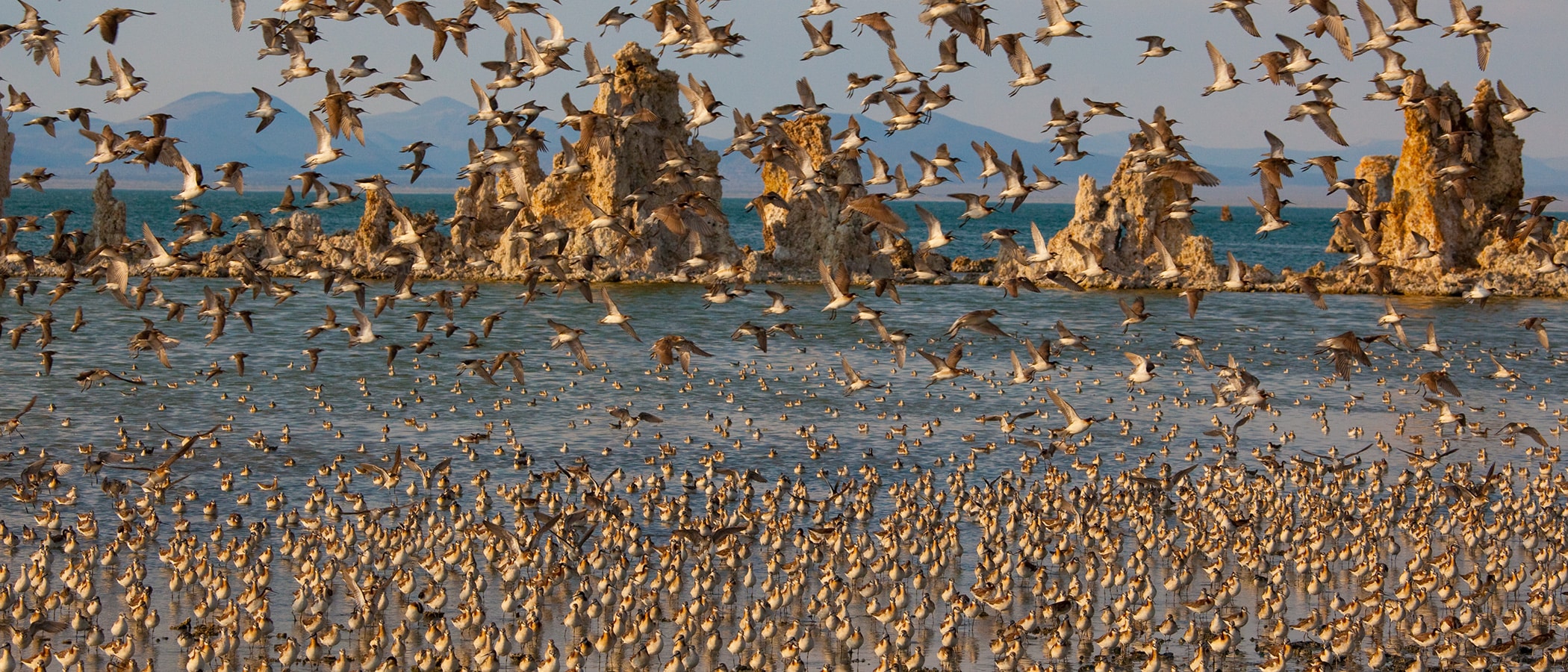
Mono Lake is a critical stopover site for millions of migratory shorebirds and waterfowl, and the variety of surrounding ecosystems attracts a wide diversity of more than 300 resident and migrant songbirds, raptors, and more.
Birds are an essential indicator of ecosystem health as well as a source of inspiration for protecting and restoring habitat at Mono Lake.
California Gull high desert nesting site
Mono Lake is home to one of the largest California Gull rookeries in North America with around 50,000 California Gulls nesting on the lake’s islands each summer.
Historically, most California Gulls at Mono Lake nested on Negit Island, the black cinder cone island to the north of Paoha. In 1977, however, water diversions had lowered the lake level to a point where a landbridge emerged, connecting Negit Island with the mainland. Hungry coyotes crossed the landbridge and made easy prey of gull chicks, which ultimately caused the gulls to abandon Negit.
Today the majority of California Gulls nest on the small islets neighboring Negit Island’s north shore in the summer, migrating back to the Pacific coast for winter.
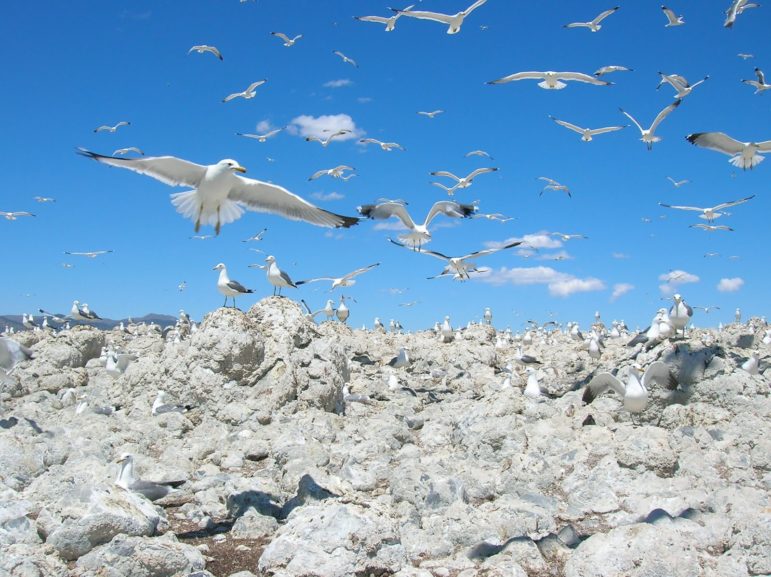
In the last decade, the gull colony has been faced with new and returning threats to their success. A prolonged drought and fluctuating lake levels have brought back the danger of coyote predation. Also, an invasive weed has reduced critical nesting habitat on Mono Lake’s islets. In response to these threats, the Mono Lake Committee took swift action to protect the colony—read more here.
Phalaropes’ incredible journey
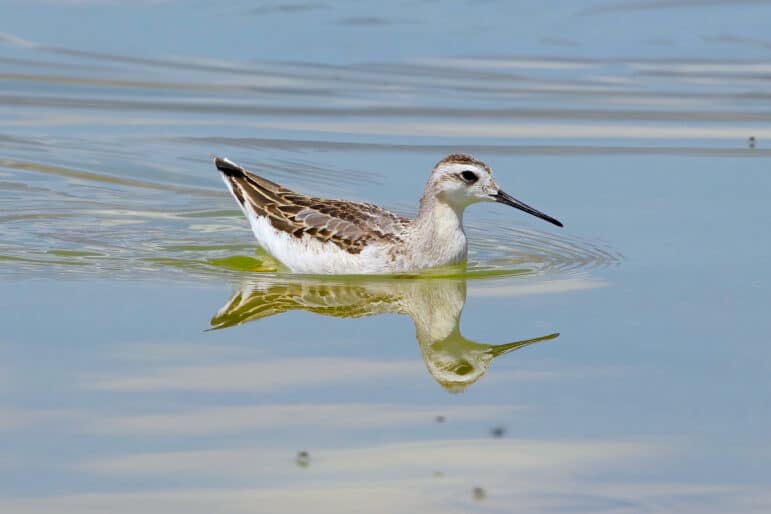
Of all the birds that come to Mono Lake, the Wilson’s Phalarope stands out as the hardiest traveler.
Tens of thousands of these small shorebirds, not much larger than a fist, arrive at Mono Lake in mid-summer after breeding in the northern United States and southern Canada (see top photo). At Mono Lake they molt their feathers and double their weight in preparation for their non-stop, three-day, 3,000 mile flight to the high elevation saline lakes of South America.
A second species of phalarope, the Red-necked Phalarope, migrates to Mono Lake along with the Wilson’s, but they migrate to the open waters of the Pacific Ocean for winter. Numbers of both species of phalaropes fluctuate greatly year to year.
Eared Grebes by the million
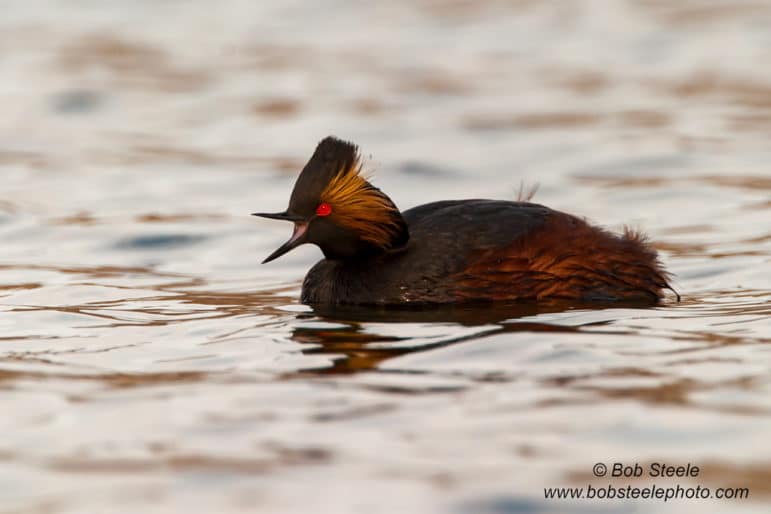
The Eared Grebe, a diving bird that spends its entire life on water, arrives at Mono Lake in greater numbers than any other species. Aerial surveys have revealed 1–2 million grebes on the lake in the fall—a large portion of North America’s population.
After grebes leave their breeding grounds in Canada and Northern California, Mono Lake provides a tasty staging area for feasting on brine shrimp and alkali flies. The grebes double, and in some cases nearly triple, their weight before departing for winter destinations like the Salton Sea and Baja California.
Eared Grebes have been studied at Mono Lake every year since 1996. Learn more about Eared Grebe research.
Pacific Flyway
Mono Lake is a vital part of the larger bird migration picture called the Pacific Flyway, which stretches along the west coasts of North and South America.
Because large numbers of phalaropes, gulls, and grebes depend on the lake, along with approximately 100 species of other birds, Mono Lake was designated as a part of the Western Hemisphere Shorebird Reserve Network (WHSRN). WHSRN is a collection of critical migratory bird habitats in North and South America.
Birds like the Wilson’s Phalarope depend on Mono Lake, as well as Great Salt Lake and a host of other lakes in South America, for their survival. Mono Lake is connected with Great Salt Lake in Utah and Laguna Mar Chiquita in Argentina because of their combined role in providing critical habitat for Wilson’s Phalaropes.
If you explore Mono Lake’s shoreline during shorebird migration you can see the lake’s importance for migratory birds. You may see American Avocet, Western and Least Sandpipers, Snowy Plover, White-faced Ibis, Dowitcher, along with the occasional rare appearances of Whimbrel, Baird’s Sandpiper, Sabine’s Gull, Black Tern, and Parasitic Jaeger.
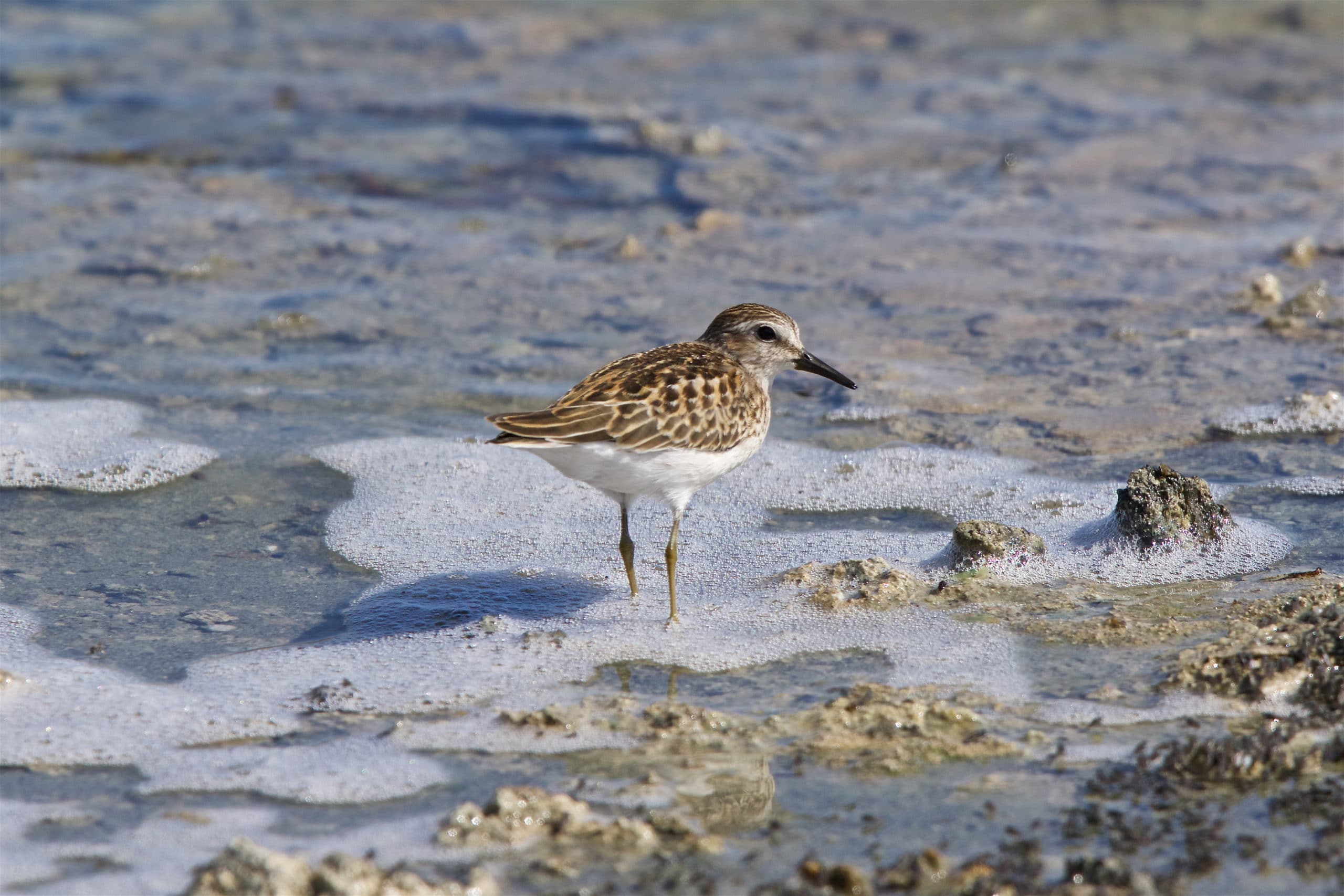
While Mono Lake supports a few breeding waterfowl, including Mallard, Gadwall, and Canada Goose, its greatest importance to waterfowl comes during their southward migration every fall.
Beginning in September, thousands of ducks, including Ruddy Duck, Cinnamon Teal, Green-winged Teal, Northern Pintail, and American Wigeon, come to Mono Lake to rest and store up fat for migration. Shoreline wetlands and creek deltas provide shelter and freshwater in close proximity to the abundant food resources of Mono Lake.
Today’s thousands of ducks are a mere shadow of the estimated one million waterfowl that historically stopped at the lake each fall before excessive water diversions to Los Angeles began.
Osprey
Fish-eating Osprey nest on tufa towers in fishless Mono Lake, and commute to the freshwater lakes nearby for food. As Mono Lake’s surface level dropped due to excessive water diversions, tufa towers became exposed above the water, providing a nesting site that is safe from ground predators like racoons, skunks, and foxes.
In the mid-1980s, the first Osprey pair arrived at Mono Lake and the population has since grown to more than a dozen pairs every year since 2020. These unique raptors are a treat when you visit South Tufa and walk amongst the tufa groves–you can see the nests offshore. Be careful not to get too close if you’re kayaking or canoeing in summer during the Osprey nesting season—the Osprey are protected by state law.
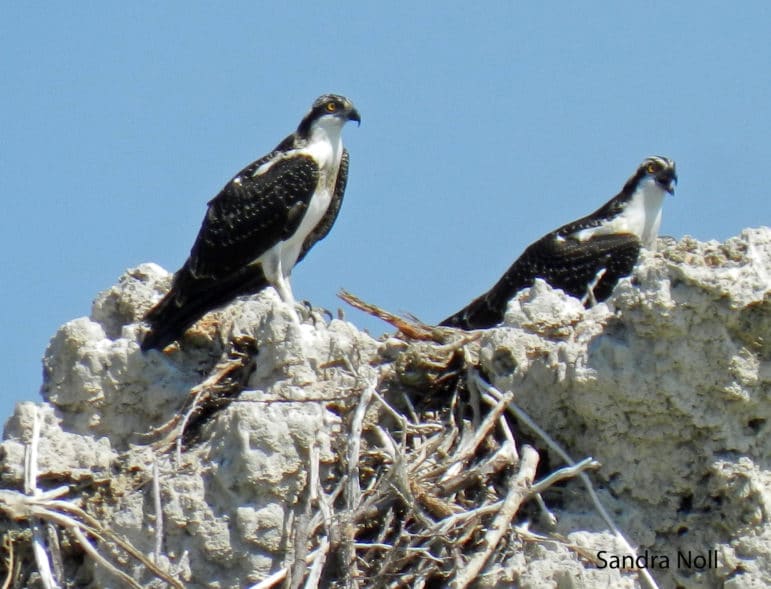
Songbirds and more
The Mono Basin is a refuge for millions of birds representing more than 300 species, including more than 118 species that nest within the watershed.
Alpine, aspen, conifer, freshwater lake, riparian, and high desert sagebrush scrub ecosystems compliment the uniqueness of Mono Lake and attract exciting and colorful birds like Green-tailed Towhee, Western Tanager, Yellow Warbler, Lazuli Bunting, Loggerhead Shrike, Red-breasted Sapsucker, and many more. From late spring into early fall is the best time to go birding in the Mono Basin to see and hear the largest number of species.
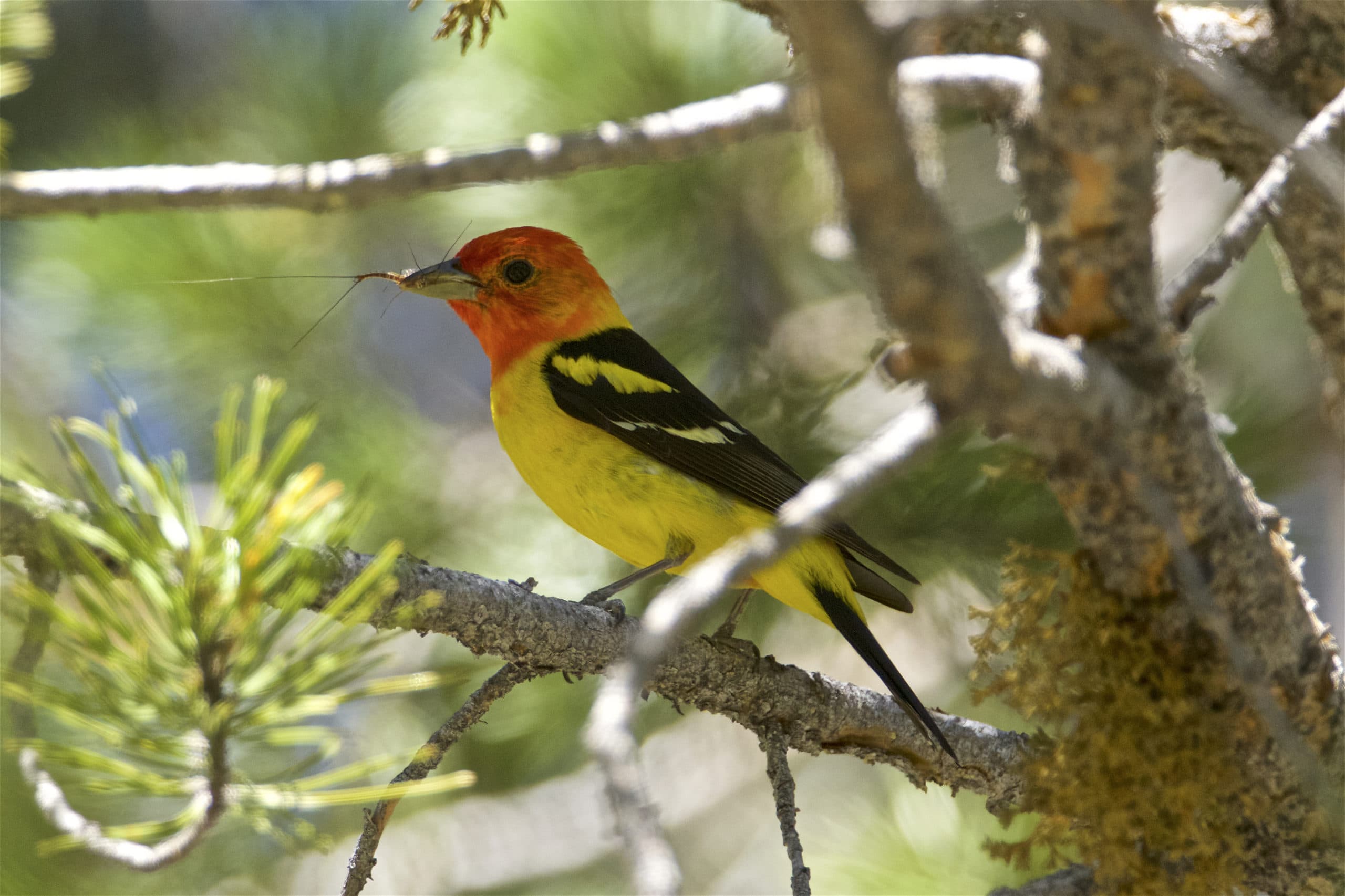
Where to find birds in the Mono Basin
The Mono Basin and the Eastern Sierra are full of amazing birding locations—it can be overwhelming if you don’t know where to start. Mono Lake County Park is our number one recommendation because it offers a variety of habitats in one location. See the resources below to find other places to bird in the Eastern Sierra, attend a free bird tour, or contact us to set up a custom birding trip with a private guide.
RELATED RESOURCE: Mono Basin eBird
Learn More
Top photo courtesy of Marie Read.

